What to see

Rocca Albornoziana
This castle, which stands out over the city of Spoleto, took its name from Gil Carrillo Alvarez de Albornoz, a Spanish cardinal and leader, a very skilled diplomat. Built starting from 1359, it is part of a series of fortresses built by Pope Innocent VI. Today it is possible to visit various rooms of the fortress: the Courtyard of Honour, the Courtyard of Arms, the Hall of Honor and the Pinta Room. Inside the Rocca Albornoziana there is the National Museum of the Duchy, inaugurated in August 2007. It can be visited free of charge every first Sunday of the month (optional reservation on 0743 224952).

Ponte delle Torri
The Ponte delle Torri, one of the largest masonry constructions of the ancient age, 80 meters high and approximately 230 meters long, served as an aqueduct, bringing water from the mountain into the city via the canal located on its top. Another of its functions, which it still maintains today, was that of connection between the historic center of Spoleto and Monteluco, thanks to the presence of a walkway that runs along the northern side.
Made of local limestone and supported by nine pillars connected to each other by pointed arches, the Bridge is not easily datable, but its current appearance is usually placed between the 13th and 14th centuries.
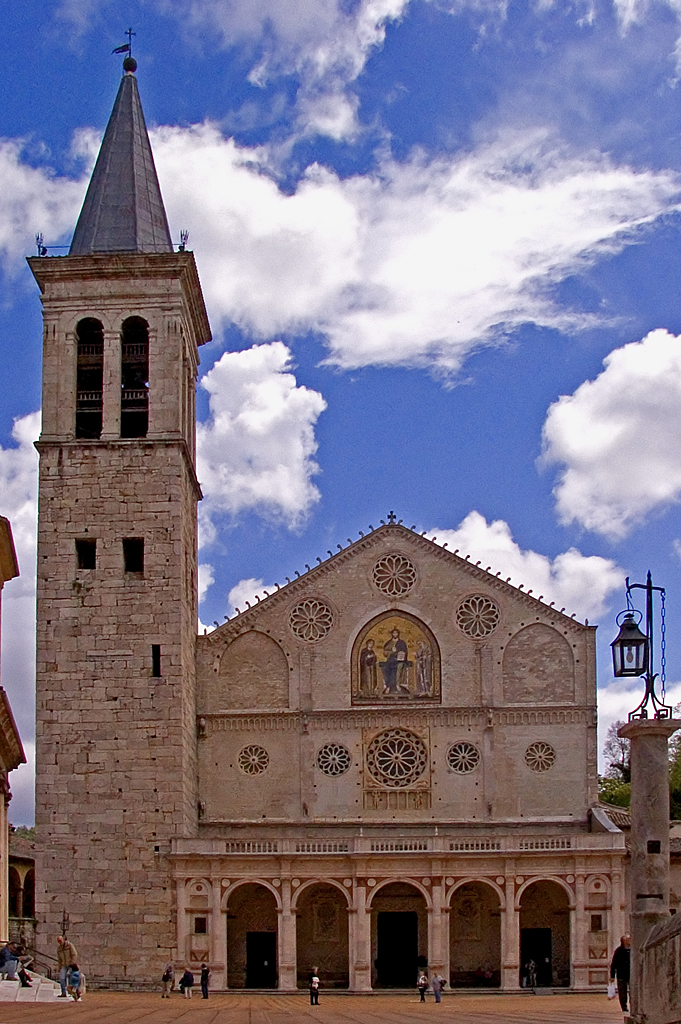
Cattedrale di Santa Maria Assunta (Duomo)
The Cathedral, rebuilt at the end of the 12th century, replaced the ancient building of S. Maria del Vescovato, from the 8th – 9th century, erected on the area of a primitive Christian temple dedicated to the martyr Primiano. On the façade, embellished with the Solsterno mosaic, there are the arches of the portico built in 1491 by Ambrogio Barocci, a famous master who had worked in the splendid ducal residence of Urbino alongside Francesco di Giorgio Martini.
Inside the Cathedral there are numerous works of absolute importance. At the end of the right nave you can admire the painted Cross by Alberto Sotio (1187), one of the oldest examples of painted crosses and presents the iconography of the living Christ (triumphans), which spread until the beginning of the 1200s in central Italy .
The apse features a notable painted cycle with Stories of the Virgin frescoed by Filippo Lippi between 1467 and 1469.
The handwritten letter from Saint Francis to Brother Leo is preserved in the Cathedral. After the sacred remains, kept in Assisi, the most precious relics of Francis are his autographs. Only two exist and one is, in fact, this one from Spoleto: a small rectangular sheet of parchment, taken from goatskin, measuring 13×6 cm, made up of nineteen lines and perfectly preserved.
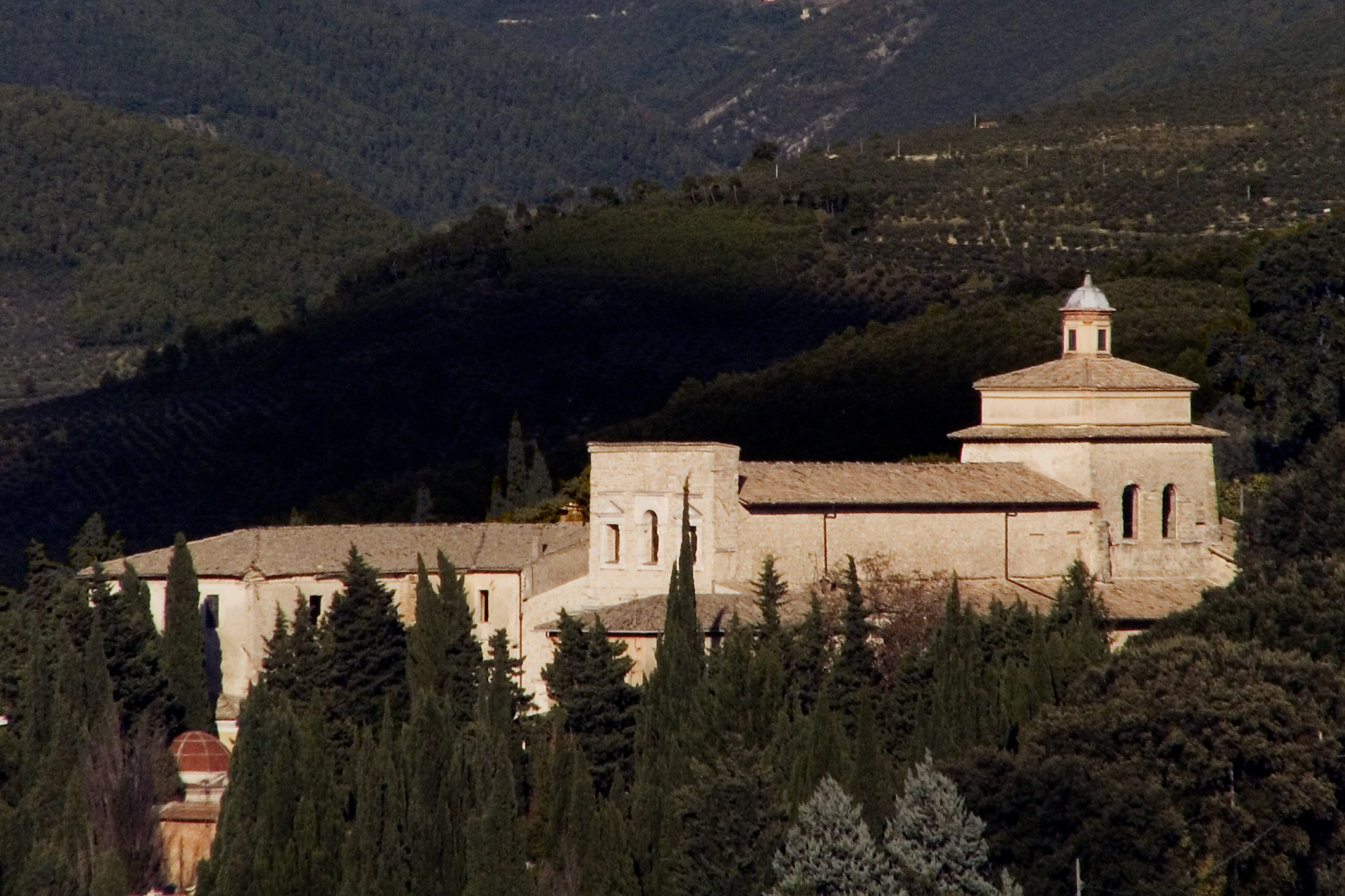
Basilica di San Salvatore
The church represents one of the main Lombard architectural testimonies of Langobardia Minor. The monumental inspiration of the Lombard dukes of Spoleto manifested itself here in the renovation of the church in the 8th century.
The whole is part of the serial site “Longobards in Italy: places of power”, inscribed on the UNESCO World Heritage List in June 2011.

Arco di Druso e Germanico
The arch stands a few steps from Piazza del Mercato, and was the monumental access door to the city forum from the Via Flaminia.
It was built in the year 23 AD in honor of the princes Drusus and Germanicus, respectively son and adopted son of the emperor Tiberius.
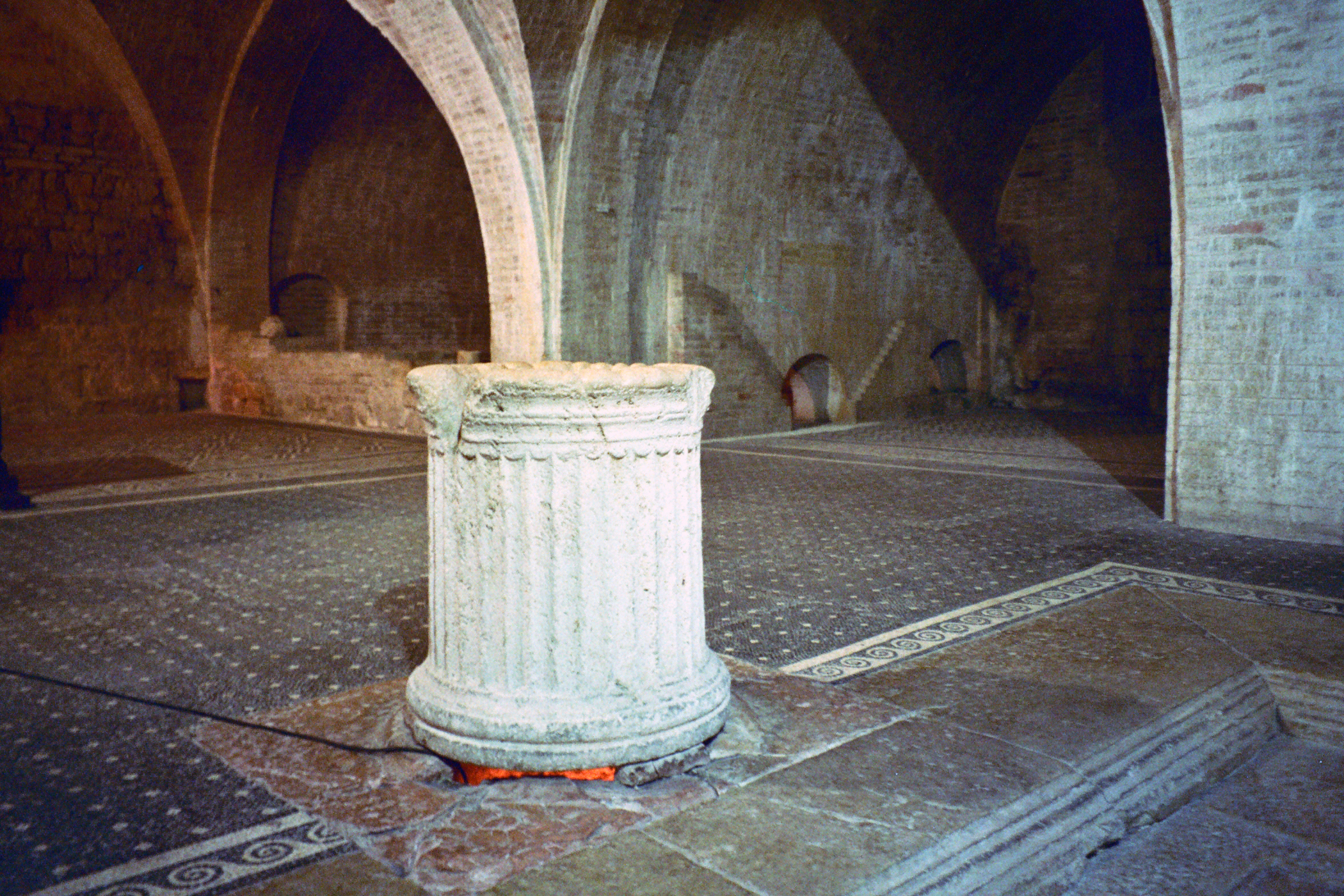
Casa Romana
Under the Town Hall is the domus, dating back to the 1st century AD. Its rooms still retain, in addition to the beautiful floor mosaics, the typical layout of the patrician houses in vogue between the end of the Republican age and the beginning of the Imperial one.
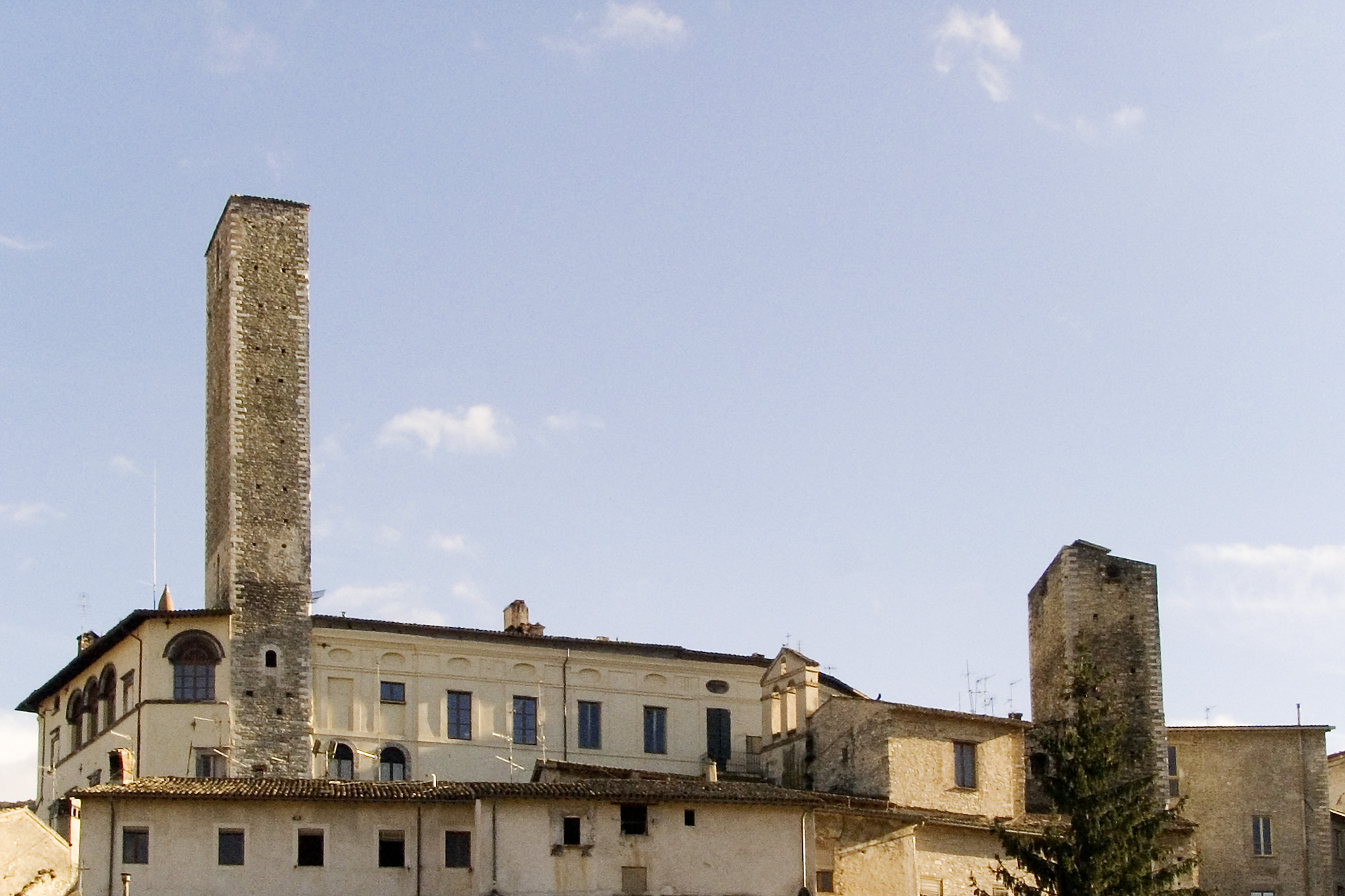
Torre dell'Olio
Attached to the sixteenth-century Palazzo Vigili, it is the tallest tower in the city, and takes its name from the ancient defensive custom of throwing boiling oil onto attackers from the top of the towers. The current tower probably dates back to the 13th century, but a similar defensive element already existed in the same place in 217 BC, when Hannibal’s Carthaginian troops, marching towards Rome, were repelled by the Spoletos. The memory of this famous event then gave its name to the gate that stands right under the tower, Porta Fuga.
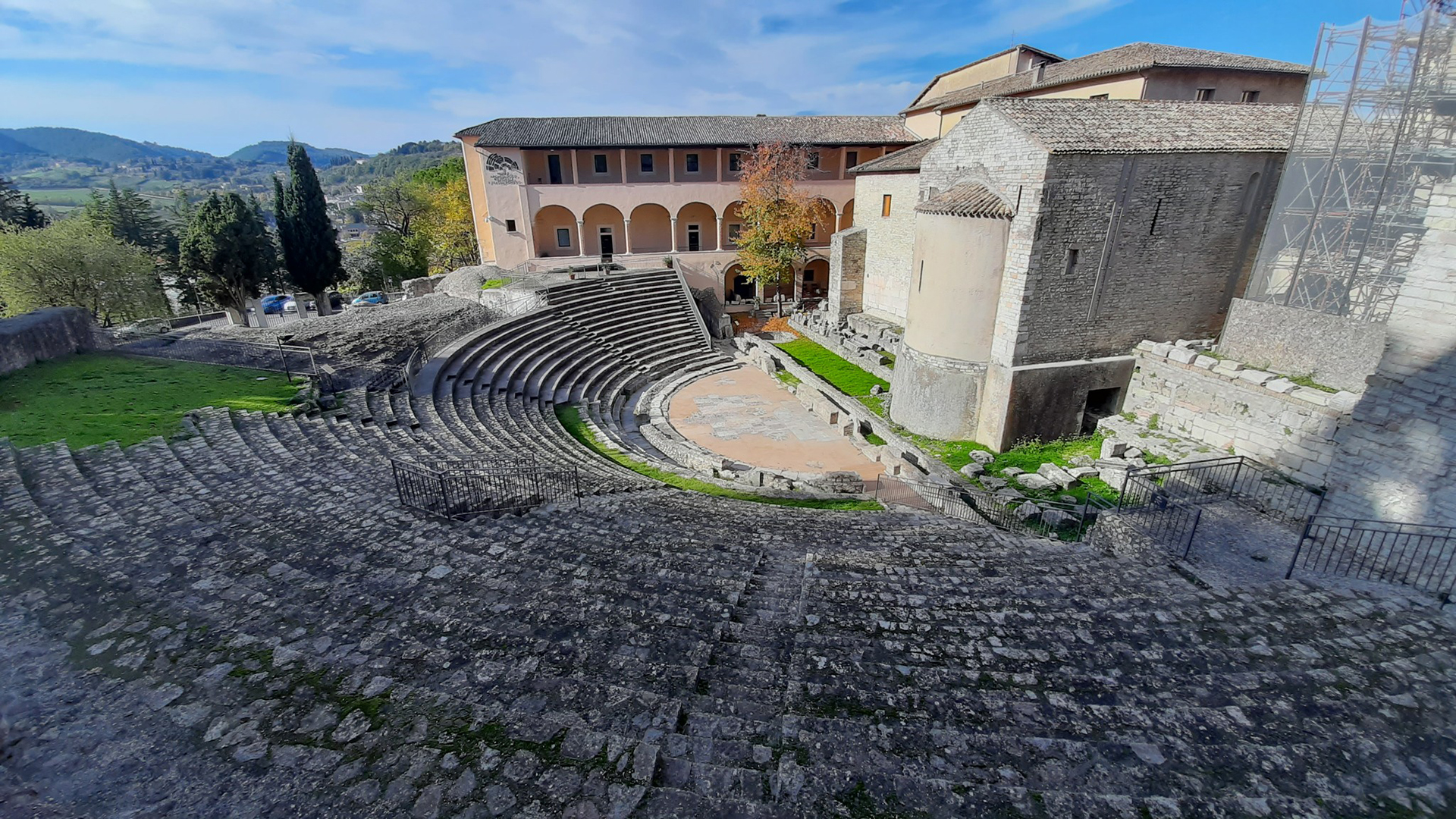
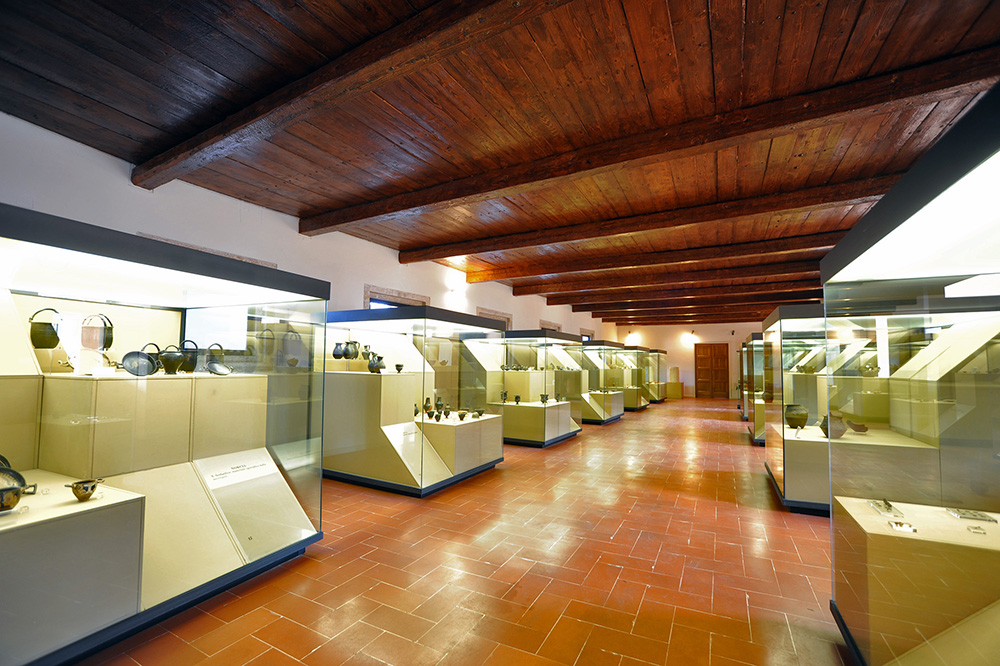
Teatro Romano and Museo Archeologico Statale di Spoleto
The State Archaeological Museum of Spoleto has been housed since 1985 inside the former monastery of Sant’Agata, built at the end of the 14th century in the area of the Roman Theater. The first floor is dedicated to the archaeological remains of Spoleto: on display are finds from the urban center and the surrounding area which tell of the various phases of development of the city, from its origins in the Middle Bronze Age (mid-2nd millennium BC) to pre-Roman phase. The second floor of the museum is dedicated to finds from Valnerina. The section dedicated to the Roman Theater is set up on the ground floor of the museum.
The Theatre, built at the end of the 1st century BC, stands on a large artificial platform delimited by a semicircular ambulatory, from which you can access, through three entrances, the cavea, on whose steps the spectators took their seats. Also preserved are the orchestra, i.e. the central space intended as an audience for distinguished spectators, and the pulpit (stage), both embellished with polychrome marble cladding, while the stage behind, which housed the backdrops for the shows, was heavily altered in the Middle Ages due to the construction of the church of Sant’Agata.
It is possible to visit it for free on the first Sunday of the month (optional reservation on 0743 223277).
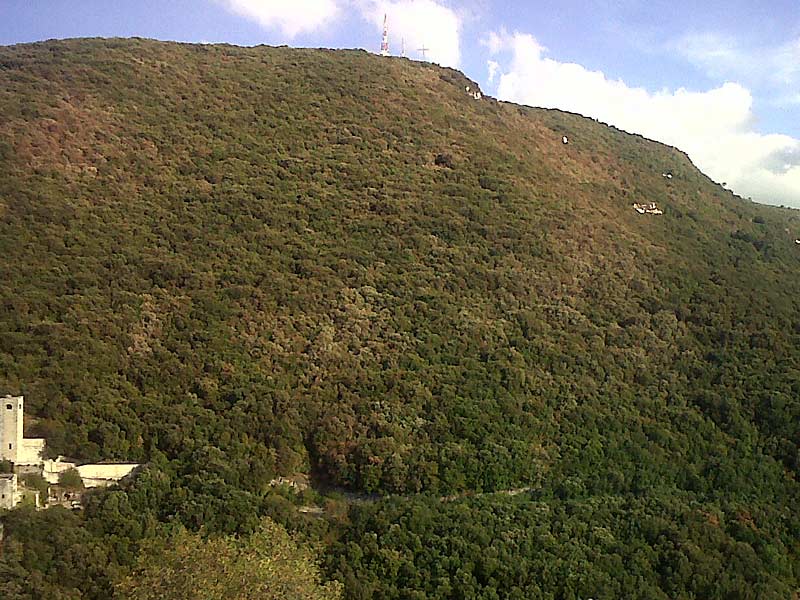
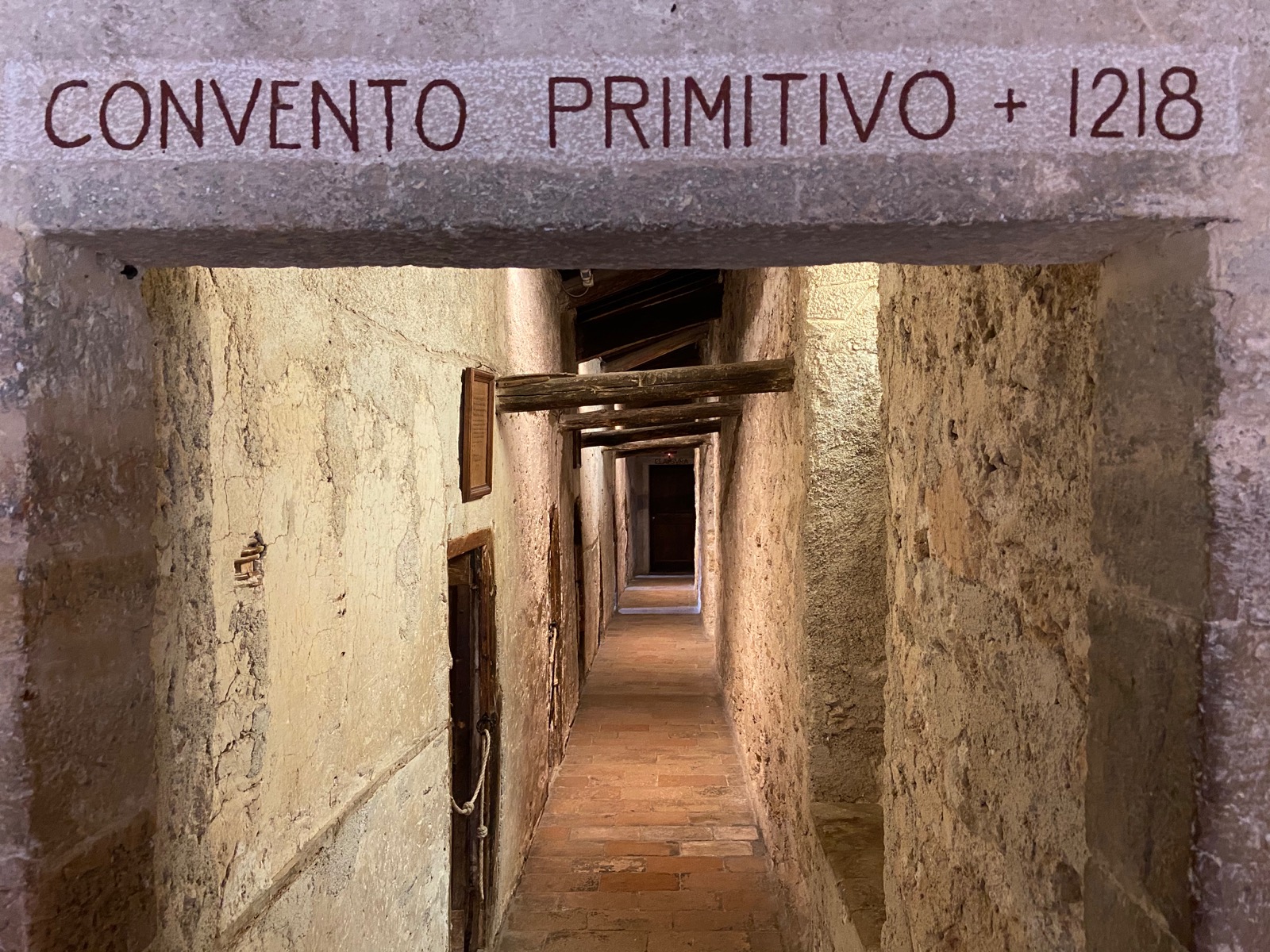
Monteluco, Monastero Francescano and Bosco Sacro
At the entrance to the city is Monteluco, a mountain covered with a dense and ancient holm oak forest, which reaches 780 m above sea level. and whose summit can be reached both on foot, thanks to a route called “giro dei tubi” and by car, with a panoramic road that offers views of the Spoleto valley and the nearby Ponte delle Torri.
The meaning of the name Monteluco derives in fact from the term lucus, sacred forest to Jupiter. The mountain was considered sacred both for men in Roman times, but also a mystical place for the many Christians who chose it to lead an ascetic life of prayer.
On the top of the mountain there is the Sacred Forest, where there is Lex spoletina, an inscription engraved on a quadrangular stone, in archaic Latin and dating back to the 3rd century BC. which enunciates a real law to protect the sacredness of the mountain and its woods.
A few steps away, the Franciscan hermitage, originally built in 1218 by Saint Francis of Assisi, who obtained a chapel dedicated to Saint Catherine of Alexandria from the Benedictine monks of San Giuliano, around which seven poor cells will arise, still visible inside of the convent, the first residential nucleus of the Franciscan brotherhood.
